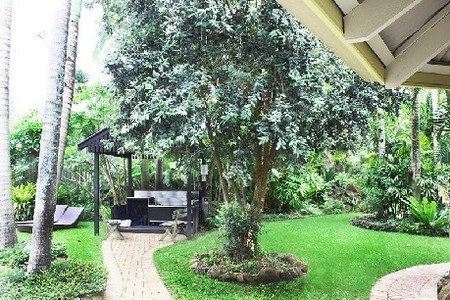
Struggling to keep your garden green? Here are 3 tips for the lazy gardener on keeping your plants alive during Winter. A big thanks to the team at Tree Lopping Ipswich for their advice, you can visit their website here.
You know what it’s like. During a hot Aussie Summer, your lawn grows so fast you can barely keep up with the mowing and your garden bed practically waters itself. However, come Winter, the arid climate and decreased rainfall means that maintaining lush, healthy plants can become a chore.
If you don’t have time nor inclination to slave over your garden but would like to keep your landscaped curb appeal, read on…
1. USE ORGANIC MULCH
Organic mulch can be particularly useful in helping your garden bed survive Winter for a number of reasons:
– A decent layer of natural-material mulch will help retain water and decrease evaporation caused by the sun. This means that your plants will be able to survive on less rainfall and you won’t need to manually water as often.
– As the mulch breaks down it enriches the soil—giving you a better base to work with and increasing the health of your plants coming into Spring.
It is important to ensure you select the appropriate mulch for your garden type. Some mulches repel certain insects, whilst others can attract them. Customising your choice of mulch to the plants and even surrounding building structures you are working with, ensures that you reap the maximum benefits from this technique. If you’re unsure what mulch to use on your particular garden, have a chat to an expert at your local garden center.
Before you lay your mulch, deep water your garden bed—making sure your soil is saturated. Once the mulch is laid, all that goodness will be trapped in…and you’ll be able to get away with doing a deep-water of the soil every few days. No more daily watering!
Deep watering refers to saturating your garden bed with at least an inch of water rather than a light sprinkle—referred to as shallow watering.
2. SETUP A DRIP IRRIGATION SYSTEM
Installing a basic drip irrigation system is cheap, easy weekend project that can be completed with products found at your local hardware store. For its water efficiency properties, drip watering systems are the preferred method of plant watering in drought-prone Australia…meaning you’ll save not only time but money too!
HOW DOES IT WORK?
Drip irrigation works through slowly dripping water onto your soil exactly where it is needed—directly at the plant’s roots. This system allows water to soak in before it has had a chance to evaporate and encourages the roots of your plants to grow longer and deeper—which can build greater drought resilience. This system will benefit most gardens—especially those in dry conditions—but may not suit rainforest-style landscaping.
3. CONSIDER USING SHADE CLOTH
If you are finding the tips of your plants turning brown and can’t seem to keep up with their water consumption, it might be worth considering installing a small amount of shade cloth over your garden bed.
BENEFITS OF SHADE CLOTH
– It provides shelter from the harsh Aussie sun which in turn reduces your plant’s water consumption.
– Installed correctly, it can provide some protection from devastating weather events such as hailstones.
WHAT SHADE CLOTH TO USE
– For general plants and vegetables, a 30% to 50% shade cloth will suit
– For plants that thrive in shade (such as orchids and ferns), 75% shade cloth may be required.
– Sun-loving Aussie natives may do worse under shade cloth.
Ultimately, deciding whether or not to install shade cloth over your garden bed will come down to the plants you are working with. Have a chat to a local expert to determine if this is right for your specific landscape situation.
